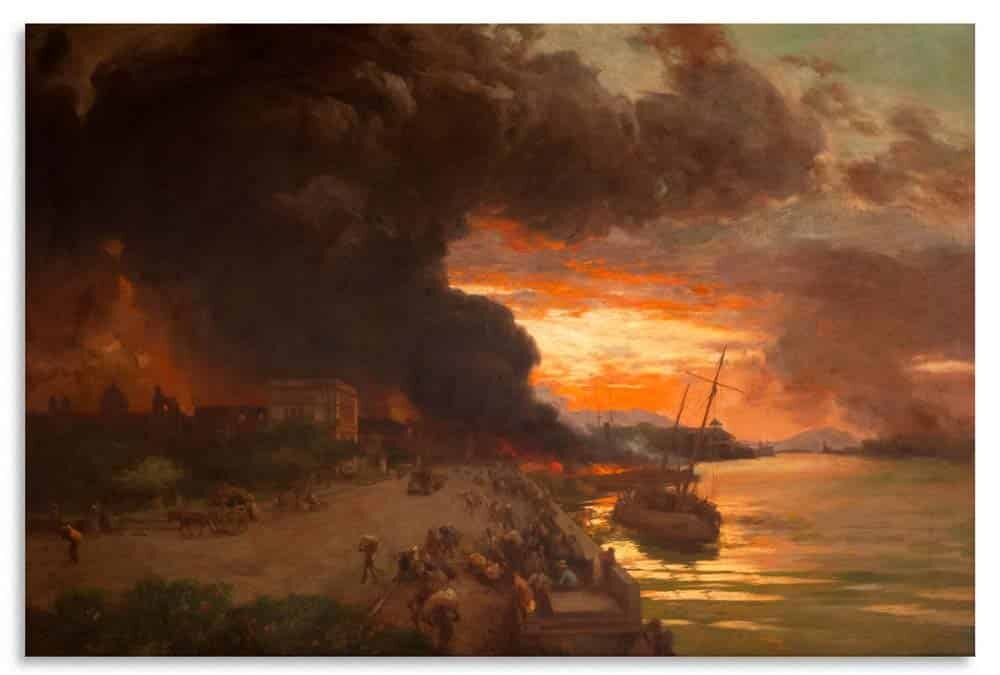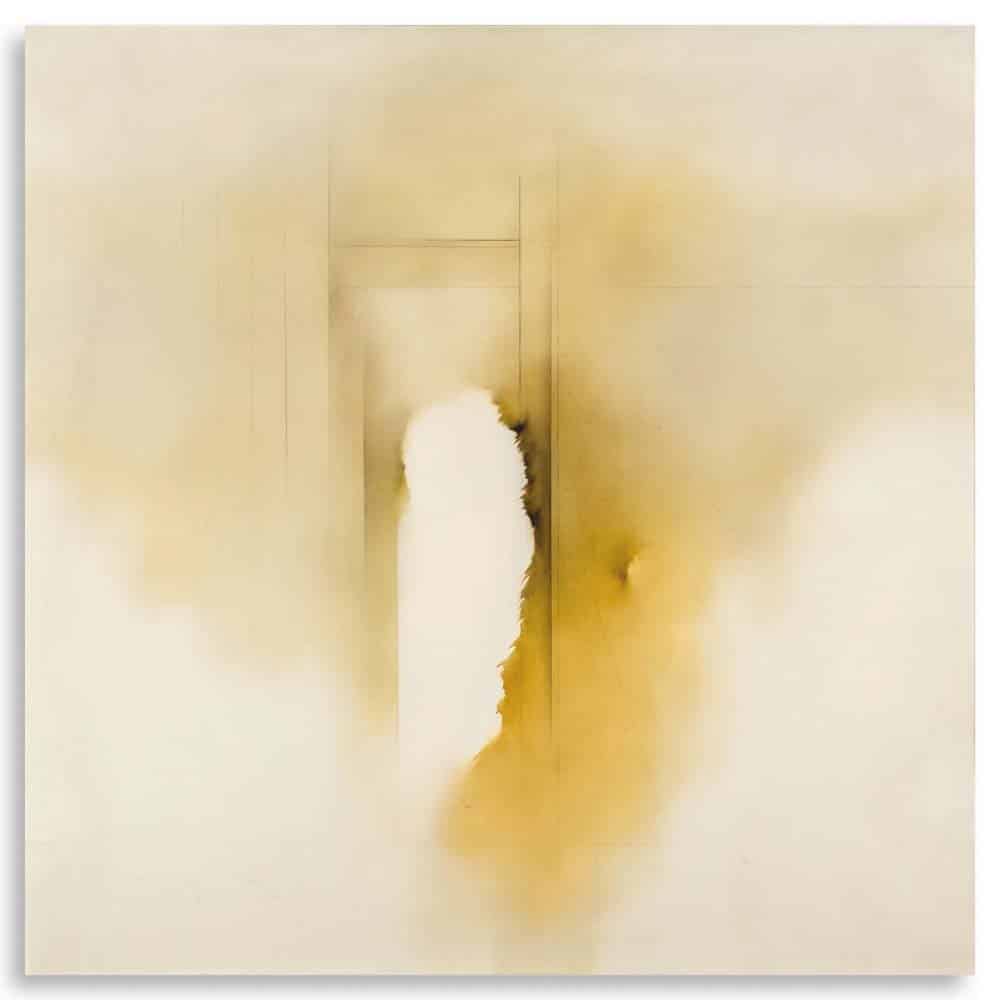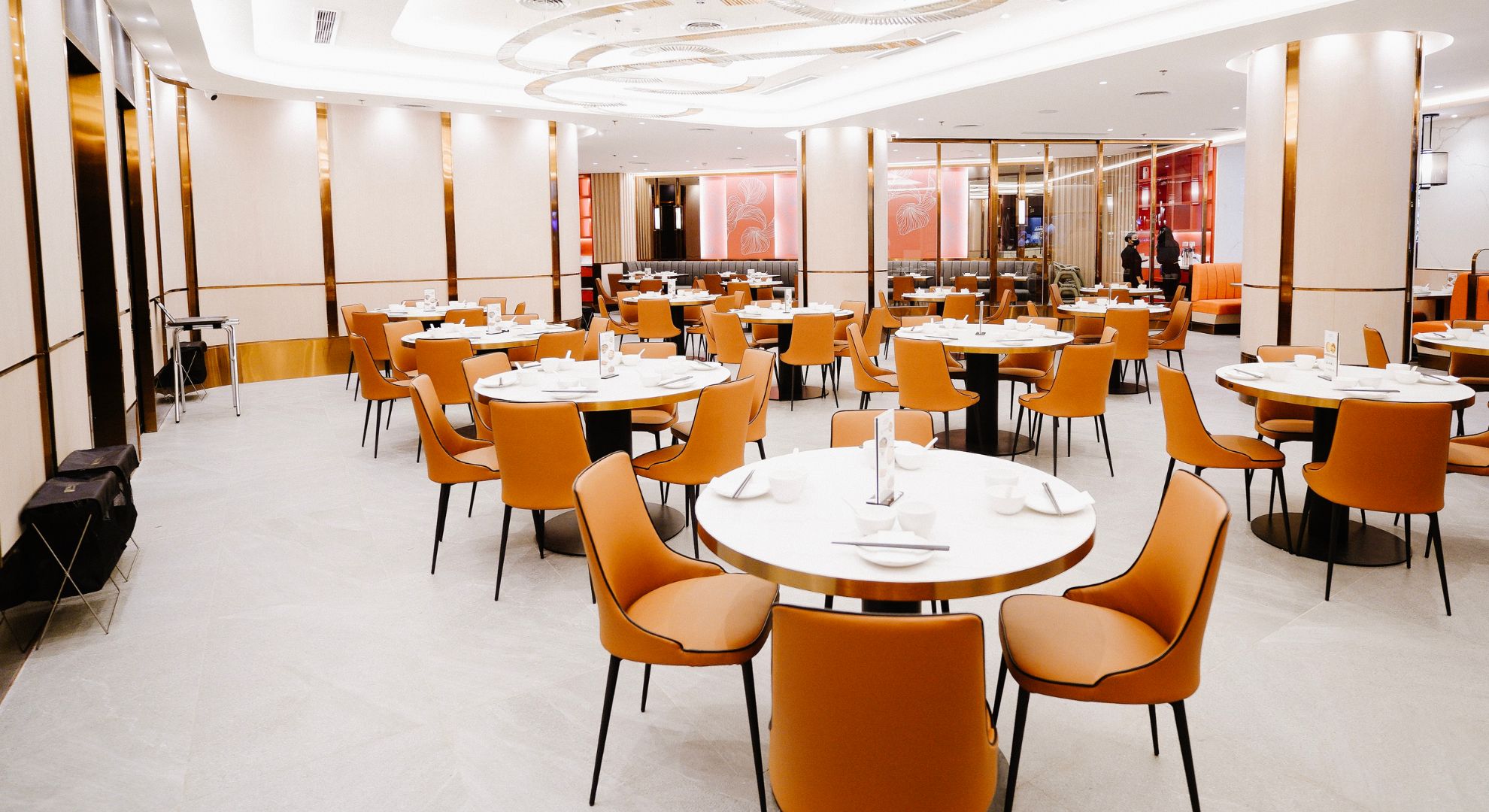León Gallery’s recently concluded Spectacular Mid-Year Auction also coincides with the gallery’s 15th anniversary. “A decade and a half have passed since we first leased that space in Corinthian Plaza and officially engaged in the dynamic business of art. The rest, as they say, is history—experiences and turning points we have always been glad to cherish and reminisce about,” says León Gallery director Jaime Ponce de Leon.
But beyond commemorations, the highly awaited auction also concluded with several record-breaking sales—from the highest-sold Filipino blade to a record for wartime pieces. Here, we listed the top 10 highest sales from León Gallery’s Spectacular Mid-Year Auction.
READ: Do private auctions and collections negatively impact art and cultural preservation?
“Water Carriers / Taga-igib” by Anita Magsaysay-Ho – P60,080,000

A rare technique among art practitioners, egg tempera is an ancient medium where egg yolks are used as a binder for pigments. Though it dries quickly compared to oil paints, it imbues the paint with translucent layers, creating a unique glowing effect.
READ: The lost art of egg tempera: Anita Magsaysay-Ho’s rare Renaissance revival
“The Burning of Manila” by Fernando Amorsolo – P36,048,000

With a price tag of P36,048,000, “The Burning of Manila” set a new record for a wartime piece by the artist, according to León Gallery. In creating this particular piece, Amorsolo was said to have been inspired by the experience of his own escape from the Japanese occupation of Manila.
“From the Market” by Vicente Manansala – P36,048,000

According to León Gallery, Vicente Manansala grew up in touch with the masses. A testament to that was his love for sabong—so much so that he once ran away from home after his father reprimanded him for having a stable for fighting birds.
“Versión en Toledo” by Fernando Zóbel – P28,838,400

The painting was made during Fernando Zóbel’s travels in Europe, particularly during his time in Toledo, Spain. He also once conceptualized the “Toldedo Project,” when he viewed the city as a possible candidate to host his art collection.
“Pequeño homenaje a Stravinsky” by Fernando Zóbel – P24,032,000

This painting is part of a series of dedications to several musicians of Zobel’s choosing. Joining Igor Stravinsky in the series are Claudio Monteverdi, Wolfgang Amadeus Mozart, Theobald Böhm, and Marin Marais.
“Variante Sobre Un Tema de Cassatt” by Fernando Zóbel – P18,024,000

Part of the Diálogos series, Zóbel engages in a hypothetical, artistic conversation with feminist artist Mary Cassatt, and responds and comments on Cassatt’s work through his painting.
READ: Zóbel pieces headline Leon Gallery’s ‘The Spectacular Mid-Year Auction’
Arturo Luz Self-Portrait – P15,620,800

Arturo Luz’s self-portrait was first showcased at the First Light exhibition at the Ayala Museum. However, he was only made aware of the exhibit due to the owner’s mother. Why? Because he painted the self-portrait for a lover who sold it once they’d separated.
“Family Vendors” by Mauro Malang Santos – P15,620,800

Outside his artistic pursuits, Mauro Malang-Santos was also a renowned illustrator known for his comics such as “Kosme the Cop,” “Chain Gang Charlie,” and “Beelzebub.”
“Women Gleaning” by Anita Magsaysay-Ho – P14,419,200

Though residing in Canada at the time of writing her “An Artist’s Memoirs,” Magsaysay-Ho stepped back to recount her summer vacations in Zambales as formative experiences for her art. “These scenes of my childhood are so vivid in my mind; women pounding rice, winding our way back to town in the dusk after the picnic, the oil lamp lit windows of the nipa houses sparkling like fireflies in the dark. Had I never holidayed in Zambales, I do not think I would have the depth of impressions, which I subconsciously draw upon with so much fondness and passion when I paint,” wrote Magsaysay-Ho.
“Claro de Luna en la Laguna de Venecia” (Moonlight on the Lagoon of Venice) by Juan Luna y Novicio – P14,419,200

Juan Luna earned his bachelor of arts degree at the Ateneo Municipal de Manila. Following his graduation, he studied at the Academy of Fine Arts in Manila, where he was urged to further his artistry in Spain. There, he enrolled at the Escuela de Bellas Artes de San Fernando.
Luna, along with his wife, Maria de la Paz Pardo de Tavera, also traveled to Venice and Rome during their time in Europe. However, Luna later killed his wife in a jealous fit of rage in September 1892.







































